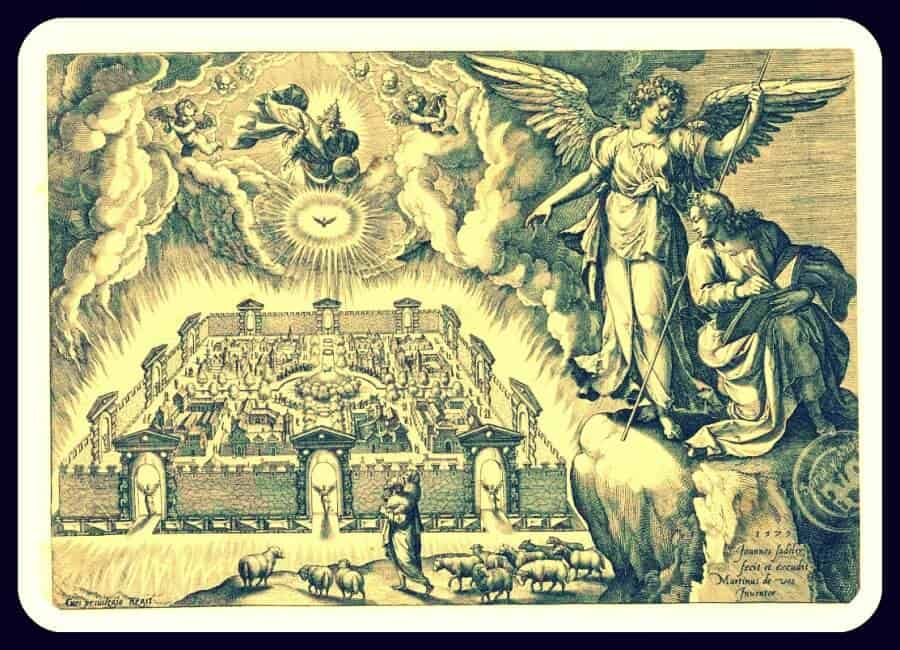In the depths of history, where mystery and spirituality intertwine, the figure of John of Jerusalem emerges. This Templar, beyond his role in the Crusades and the foundation of one of the most enigmatic military and religious orders, left us a compendium of futuristic visions.
John of Jerusalem: The Mystic Who Inspired Nostradamus
Born in 11th-century France, John of Jerusalem was not only a witness to the foundation of the Knights Templar but also became one of its pillars. His life, marked by a spiritual quest, navigated between the divine and the earthly, balancing faith with action.
From a young age, he displayed a deep interest in knowledge, setting him apart from his contemporaries. His time in Jerusalem was pivotal; there, interactions with scholars from various cultures enriched his outlook, providing him with a broader understanding of the world and its mysteries.
The “Secret Protocol of the Prophecies” by John of Jerusalem captured the attention of historical figures like Nostradamus and has fascinated generations since. Rediscovered centuries after its creation, this compendium reveals the depth of his thought and his ability to foresee the future.
Describing events that many interpret as parallels to our current times, his visions range from natural disasters to humanitarian crises, all presented with a timelessness that challenges the passage of time.
His ability to “read and listen to the sky,” as ancient manuscripts described him, allowed him to bridge esoteric knowledge and universal truths, making him a transcendental figure in the study of prophecies.
The Journey of the Prophecies Through Time
The path of John of Jerusalem’s prophecies is a saga filled with mystery and rediscovery. Hidden for centuries, these visions briefly surfaced during World War II, only to vanish in the conflict’s chaos.
Their subsequent discovery in the KGB archives adds a fascinating chapter to the texts’ history, hinting at the many hands through which they passed and the dark periods in which they remained hidden. This odyssey not only underscores the prophecies’ significance but also reflects the fear and reverence they have inspired over the years.
Analyzing John of Jerusalem’s prophecies in today’s context reveals their astonishing relevance. With disconcerting clarity, they speak of global challenges that would resonate with any contemporary reader.
The environmental crisis, pandemic diseases, and social unrest are just a few of the themes they seem to anticipate. What sets these visions apart is their blend of stark reality with poetic beauty, offering not just warnings but also deep reflections on the human condition.
These prophecies go beyond predicting; they invite introspection on how individuals and societies can navigate turbulent times, suggesting that, amidst crises, there are opportunities for transformation and rebirth.
The Eternality of a Legacy
John of Jerusalem’s prophecies, more than mere predictions, are a call to reflection and collective consciousness. Through the centuries, his legacy has transcended borders and eras, finding resonance in humanity’s concerns and hopes.
His ability to speak to future generations underscores the timelessness of his message and the deep connection between our past, present, and future.
In an increasingly complex and challenging world, John’s visions invite us to consider not only the risks we face but also the possibilities for change and improvement. His legacy reminds us that, in adversity, lies the opportunity to grow and evolve toward a more conscious and harmonious society.
Thus, the figure of John of Jerusalem and his prophecies remain not just a testament to his time but a source of inspiration for all generations. In them, we find not just warnings but also the promise of a better future, despite challenges, where we can aspire to a better world.
Ultimately, his legacy teaches us that hope and conscious action are key to facing the times ahead.





